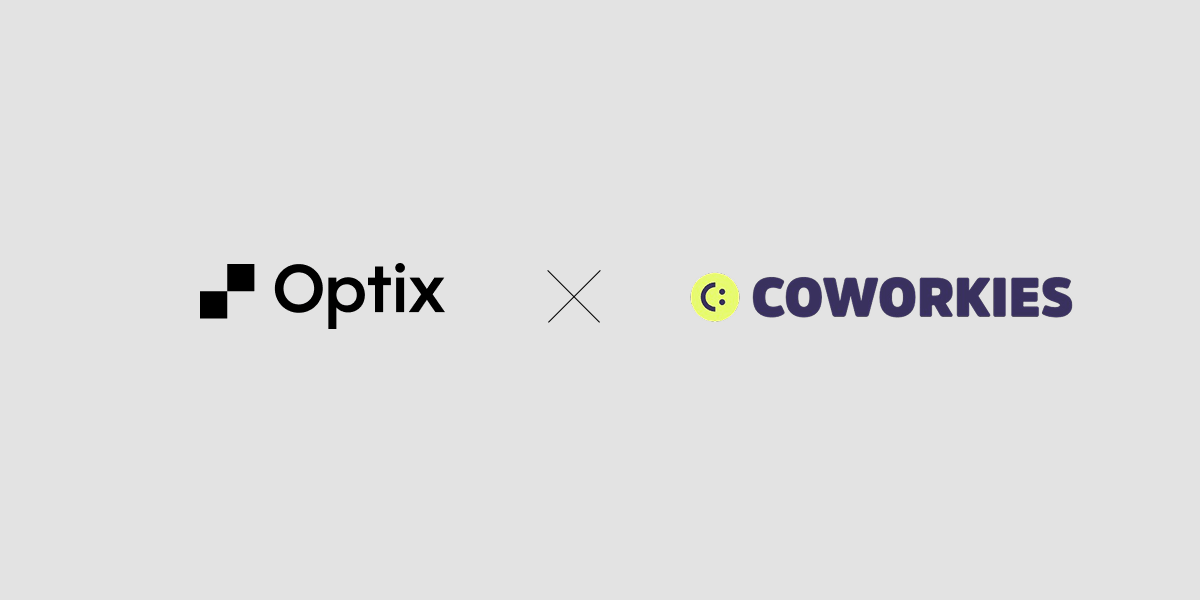
Here’s a mistake we see far too often: aspiring coworking owners and operators starting their business without a clear plan for how their space is going to make money.
This is where a business plan comes in. A well-crafted business plan for your coworking space can help you make decisions and give you the confidence you need to succeed. It’s the best way to map out your business strategy and how you intend on making money.
And truthfully, writing a business plan for your coworking space is a lot easier than you think.
Ready to get started? Download our free coworking space business plan template here.
What is a coworking business plan?
A coworking business plan is a document that outlines exactly how you will start your coworking space and reach profitability. If you are applying for a loan or looking to receive funding, then a business plan is not just a formality, it’s a necessity.
For those who aren’t looking for funding, a business plan is still an excellent way of making sure you have a viable business before opening your doors.
The benefits of writing a business plan for your coworking space
Having a business plan for your coworking space (or any business for that matter) gives you a greater chance of overall success. A business plan can help you:
- Support you in receiving a loan or funding
- Help guide long-term strategy and planning
- Be useful when making important business decisions

Here is another way of looking at it. Let’s say Steve wants to start a coworking space. He finds a property to rent in his area and starts building out the space. He looks at some of the other coworking spaces in the area and uses it to inform what he offers and how he prices it.
But when he finally opens his door…crickets.
Because Steve didn’t have a business plan in place, he did not consider:
- Who he is targeting
- Whether this location is a good fit for his market
- If the products he is offering are interesting to his target audience
- How he will acquire his first members
- If the cost of his services are be enough to be profitable on a monthly, quarterly, or annual basis
You don’t just need a plan when starting a business however. You’ll also want to consider creating a business plan when you are looking to grow or expand your coworking business, as your business needs may change slightly from when you first opened your space.
What you should include in a business plan for your coworking space

A typical business plan for a coworking space will include the following components:
- Executive summary: summary of the document in its entirety
- Company description: description of your company including the mission statement and objectives
- Market analysis: write-up of the market, both local and more broadly
- Competitive analysis: deep dive into your competitors, both local and more broadly
- Description of management and organization: outline your team and how the organization will operate together
- Breakdown of your products and services: description of what you will be selling
- Marketing and sales strategy: how you plan to market your space and acquire customers
- Financial projections: a breakdown of your finances and your path to profitability
- Fundraising strategy/sources: how you will fund your business
Each section should be roughly 1-3 pages long (remember, more does not necessarily equal better). Optimize for clarity and completeness, while still being concise. This article from Harvard Business Review is an excellent guide to creating a general business plan that can be applied to many different industries.
How to write the BEST coworking business plan
Let’s look at each section and break down how to write the very best business plan for the coworking industry.
1. Executive summary
The executive summary is a one-page overview that summarizes your entire business plan at a high level. It should cover:
- Who you are
- The business you’ll be creating
- How you’ll make money
- etc.
Our best tip is to write your executive summary last. Much like an introductory paragraph of an essay, it will be easier if you wait to write it until everything else is complete.
2. Company description
Think of your company description as the “About” page of your business plan. Here, you’ll describe three important components of your business.
1. Mission Statement
Why are you starting your coworking space? What do you hope your space will be able to achieve in the broader community? Consider your purpose for creating the space and weave it into your mission statement.
“Our mission is to give artists the tools and access they need to be able to scale what they do in an economical way. We want to help artists execute and finish projects and build community at the same time.”Jason Jet, Founder at Grindhaus
2. History
If you’re a brand new space, the history of your company may cover your personal resume and the skills you’ve acquired that will help you be successful in your role as a coworking space owner and operator. If you’re expanding your business, then the history will cover the history of your business up to that point, including all major milestones and successes.
3. Objectives
The biggest difference between your mission statement and your objectives is: your mission statement maps out why you do what you do, and the objectives map out what you hope to accomplish on a more tactical level.
Overall, keep your company description clear and concise, and don’t get too bogged down in the details. The mission statement could be two or three lines, and the history and objectives can easily be addressed through bullet points or brief paragraphs.
3. Market analysis
Your market analysis will outline key facts and findings about the coworking market you’ll be playing in. This includes the local market and the coworking sector more broadly.
Here’s our best advice for a successful market analysis:
- Look for reports from reputable sources in the industry, such as the Deskmag annual Global Coworking survey, to get important facts and figures related to the industry
- Find communities online, like the We Run Flex community, where operators are discussing coworking trends and challenges
- Talk to local operators and gauge their experience and perspective on the industry
Some important elements to talk about are the growth of the market, current overall trends, and your target customer and how you came to that conclusion.
For example, based on your market analysis, you found that remote workers are making up 20% of coworking space occupants with that number expected to increase. Therefore, you intend to target your coworking space towards remote workers in your area.
Another tip for this section (and your business plan overall) – support all facts and findings with credible sources. If ever a question on where a number comes from pops up, be sure you are able to back it up.
Questions to answer while completing your market analysis
- What is the size of the market?
- What is the growth trajectory?
- What are trends in the industry?
- What is the primary demographic that it serves?
- Who are your direct competitors?
- How big are they (number of members, locations and revenue)?
- Who do they serve?
- What is their messaging and positioning?
- How do they differentiate themselves?
4. Competitive analysis
The competitive analysis of your business plan breaks down the competitors in your market. You’ll want to focus specifically on coworking spaces and flexible workspaces in the area where your business will be located, as well as broader competitors that may be a potential threat.
Your competitive analysis is ultimately about mapping out exactly how you will win when pitted against other spaces. Coworking Resources has a great comprehensive guide on how to conduct a competitive analysis specifically in the coworking industry that’s a great reference if you’re looking for a framework to start off with.
A quick mention on competitors in coworking…
Many coworking space owners and operators don’t like to think of themselves as having “competitors”. Collaboration can (and does) exist in the coworking sector, and many operators enjoy sharing their knowledge with others. However, understanding the other coworking spaces in your area is critical to understanding the viability of your business and should not be overlooked.
5. Description of management and organization
The description of management and organization section is an opportunity to describe the team of people you will have working with you, with a focus on their credibility and why they will help you be successful.
Many of our clients start as a team of one or two. If this is the case for you, highlight how you will ensure success in the absence of a larger team.
This could be a good opportunity to mention the coworking technology you will use to help you streamline operations and automate your space. Coworking software like Optix takes care of many of the day-to-day operations so that you can be successful with a leaner team.
Automating as many aspects of the day-to-day operations as possible can help reduce the need for more bodies in your space. This section is a great opportunity to expand into these details.
Plan for success in your coworking space with Optix

6. Breakdown of your products and services
In your products and services breakdown, you’ll want to describe what you’re selling. For coworking businesses, this may look like:
- The core products you’ll offer (hot desking, drop-ins, private offices, virtual offices)
- Other additional services (childcare, marketplace, etc.)
- Amenities and add-ons
- Opportunity for after-hour event rentals or events in your coworking space
Finding the right mix of products to drive profitability can be a challenge for new operators. We always recommend approaching it from a point of experimentation – start with something and iterate quickly.
We also have a comprehensive guide to coworking membership plans if you’re looking for inspiration on what kinds of plans to offer and how to price them. All of this will be helpful in determining the breakdown of your products and services in your business plan.
Crowdsource community knowledge
The wonderful thing about the coworking community is how willing people are to share their knowledge with one another. If you’re feeling lost on where to start with your business plan, consider reaching out to a coworking operator who has opened a successful space in the past.
You can also look at other successful coworking businesses and take inspiration from them as to their:
- Business model
- Marketing tactics
- Products and services
Every space is different, but gathering insight from other coworking spaces that have been successful can be a great place to start.
7. Marketing and sales plan
Your marketing and sales plan should give a high-level overview of your overall customer acquisition strategy.
The best advice we’ve heard is that your marketing strategy should be centered around your customer – who they are, what messaging will resonate with them, and where you can reach them online and in-person.
Don’t know who your customer is? We wrote a guide to finding your coworking ICP, too.
8. Financial projections
Create a clear and accurate picture as to how much revenue you think you will be able to generate in your first years of business. Investors want to see opportunities for growth, so make sure your numbers are increasing, while remaining realistic.
Revenue projections is an imperfect science, but there are good places to start. The Coworking Growth Calculator by Coworking Resources can help you in creating some realistic financial projections, while giving you a better idea as to how much you can expect to make from your space.
Be conservative with your numbers
It’s easy to get excited with your numbers. The problem with overestimating projections is that it can set you up for a tremendous amount of stress later on if your business fails to meet expectations. It’s best practice when creating a business plan to always be conservative with your numbers and remain realistic in your expectations. This includes:
- Financial forecasts
- Market size
- KPIs
This article outlines ten common mistakes people make when creating a business plan…including being unrealistic with numbers and forecasts. It’s always better to underpromise and overdeliver.
9. Fundraising Strategy/Sources
Finally, the last section of your business plan is dedicated to how you will fund your coworking space.
If you have received any funding up to this point, you’ll need to disclose the information for transparency. If you are seeking funding, use this section as an opportunity to outline your strategy including how much you are seeking.
Set clear goals and objectives
Throughout your business plan, you will want to make sure you are creating clear KPIs and objectives to drive your business forward.One way of creating measurable objectives is by following the SMART goal framework (Specific, Measurable, Attainable, Relevant, Time-based)
Here’s how to apply the SMART goal framework to your coworking business plan.
- Marketing Objective: Acquire 50 new hot desking users in the first 6 months
- Management Objective: Hire a part time community manager in the first 60 days of opening
Plan for success in your coworking business
A business plan can be a powerful tool in growing a successful coworking space. However, they will only get you so far. This article does a great job at outlining the pros and cons of business plans if you’re curious on what your plan can (and can’t) do for you.
Remember, the success of your business will ultimately come down to the execution and implementation of your plan. Don’t treat your business plan like an end-all be-all. We’ve seen a wide variety of clients succeed after changing their plan significantly. Execution is the name of the game when it comes to growing a successful business, and it’s best not to lose sight of this.
Looking to start a coworking business and want to choose the best coworking software for your business? Learn more about Optix and how it can help you grow a successful coworking business by connecting with a member of our team today.




